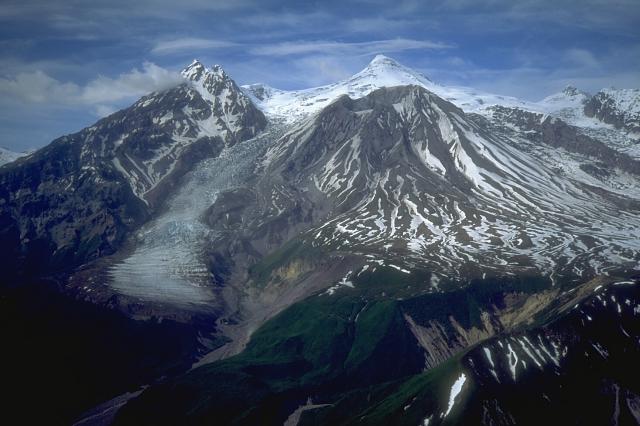Mount Spurr: Rising Seismic Activity Raises Concerns

Mount Spurr, a stratovolcano located 124 kilometers west of Anchorage, Alaska, has recently shown an increase in seismic activity. Over the past ten months, scientists have detected small earthquakes in the area. However, in recent weeks, there has been a noticeable uptick in these tremors. Initially, the earthquakes were concentrated near the summit of the volcano. Now, they have shifted towards Crater Peak, a side vent that erupted in 1992 and 1953. This change in seismic patterns has raised concerns among scientists, who suggest that it may indicate the movement of magma beneath the volcano. The likelihood of an eruption at Crater Peak is estimated at 50 percent, while the chances of an eruption at the main crater remain low.
Potential Eruption Scenarios at Mount Spurr
The Alaska Volcano Observatory (AVO) is closely monitoring the situation at Mount Spurr. According to their assessments, the ongoing seismic activity could lead to an eruption or may subside without any significant volcanic activity. Matt Haney, the Scientist-in-Charge at AVO, noted that the earthquake patterns have intensified. Tremors are now concentrated in an area approximately three kilometers down the slope from the summit. This shift aligns with previous eruptions from Crater Peak, which have historically produced ash plumes that reached heights of 20,000 meters.
Despite the current seismic unrest, it is important to note that increased seismicity does not always result in an eruption. For instance, volcanic activity observed in 2004 and 2005 did not culminate in an explosive event. This history serves as a reminder that while the current situation is concerning, it does not guarantee an imminent eruption. Scientists continue to analyze the data and assess the risks involved.
Possible Impact of an Eruption
If an eruption were to occur at Mount Spurr, it could pose several hazards to surrounding areas. Potential dangers include pyroclastic flows, lahars, and ashfall. Fortunately, there are no communities directly in the path of potential lahars or pyroclastic flows. However, the impact on air travel could be significant. The 1992 eruption of Crater Peak led to the temporary closure of Anchorage’s airport and resulted in ash covering parts of the city.
Given the current volume of air traffic in Alaska, a similar eruption could disrupt transcontinental flights. The potential for widespread ashfall could affect air quality and visibility, leading to delays and cancellations. Scientists are monitoring the situation closely, particularly for signs of prolonged seismic tremors. Such tremors could indicate that an eruption is imminent, prompting further action and preparedness measures.
Observer Voice is the one stop site for National, International news, Sports, Editor’s Choice, Art/culture contents, Quotes and much more. We also cover historical contents. Historical contents includes World History, Indian History, and what happened today. The website also covers Entertainment across the India and World.
Follow Us on Twitter, Instagram, Facebook, & LinkedIn

